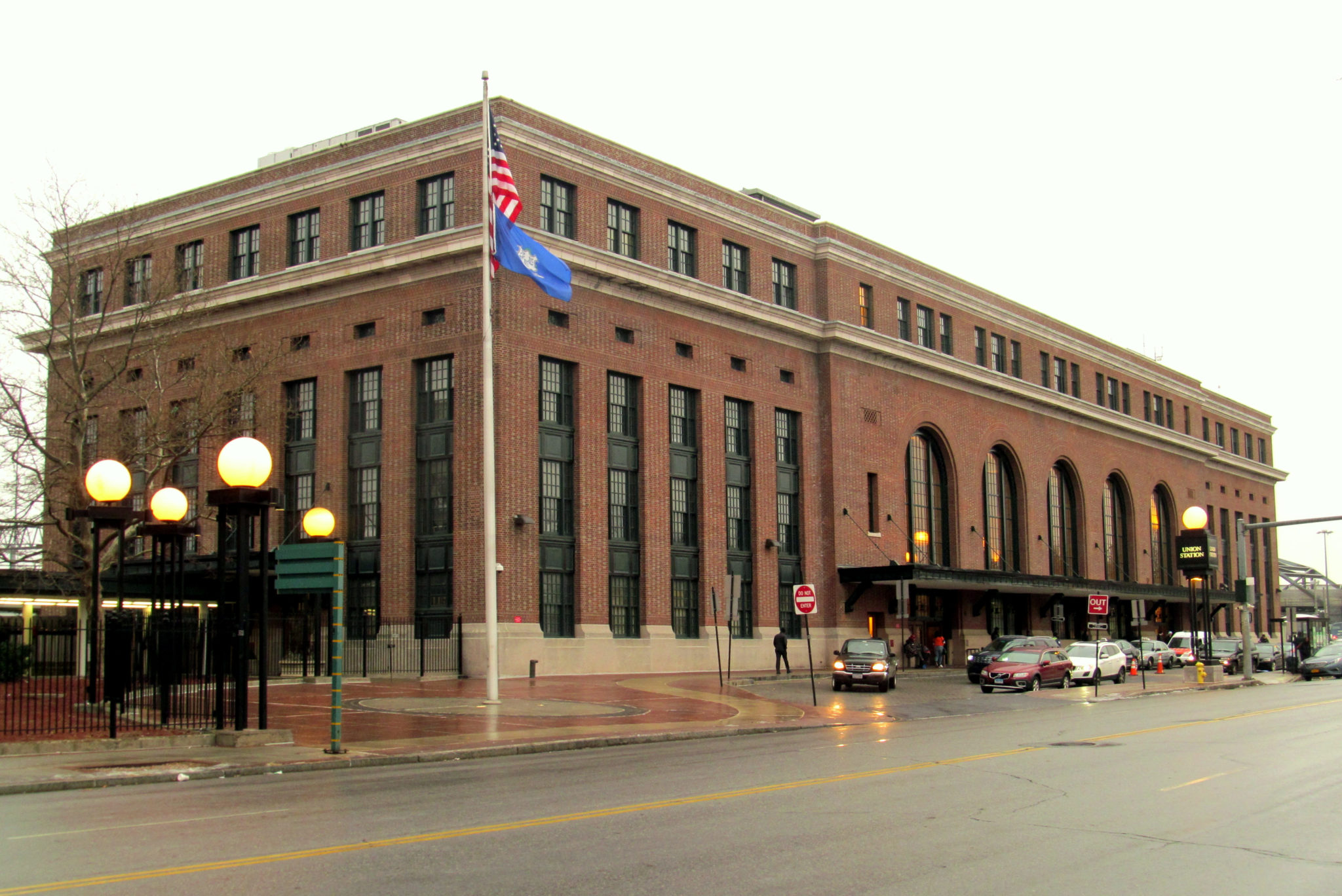
Wikimedia Commons
Last November, the state Department of Transportation announced its approved plans to build a $60 million, 1,015-space, seven-level parking garage at Union Train Station. The final design will be completed by April, and construction is expected to begin in the fall. But over the last few months, local residents and preservationists have raised concerns with the current plan.
The New Haven Urban Design League released a study earlier this month that argued against the state’s plan for construction. The group has advocated for “transit-oriented development” alternatives that could create public benefits, including turning the garage into a mixed-use space with shops and residential or office buildings.
“This is in the heart of two historic districts, and the developers just don’t seem to be looking at this and thinking that this is part of their market,” President of the New Haven Urban Design League Anstress Farwell said. “[The developers] feel like they can just move fast and not worry about people, bikes, and other cars on urban streets.”
The current garage proposal is for the construction of a seven-level parking garage next to the current garage lot, which provides room for 260 vehicles. The new garage would add 688 parking spaces and 240 spaces for bicycles, doubling the amount of existing spots for commuters to lock up their bikes. The two garages would be connected to each other with a pedestrian lobby area and drive connection, for this, a garage roof replacement is needed as it requires completely new desing. The state will incur the entirety of the costs of building the new site.
The Urban Design League released the report in the hopes that they could help change Union Avenue from being an “undervalued sacrifice zone” — where massive facilities and structures can be built with little consideration for the people who live and work in the nearby area — to becoming a “great and prosperous urban place.”
The Urban Design League report addressed community concerns about the garage’s impacts on traffic, air quality, public safety, and the “profoundly incongruous” design the state presented because of its inability to be used for mix-used purposes.
City Plan Director Michael Piscitelli did not respond to a request for comment on Tuesday.
According to the New Haven Register, Mayor Toni Harp said that the opening of a rail line to Hartford, Springfield and other stations in New England has increased the need for commuters to come to New Haven. The current garage is now 94 percent full on a daily basis.
Farwell expressed concern about how the new garage would impact city traffic. She noted that the city’s “Complete Streets” ordinance — which was passed about ten years ago — focused on reducing the number of driveway aprons in areas that see a lot of pedestrian traffic. Farwell said that despite the city’s alleged efforts to implement thoughtful design projects, the new garage is similar to the development types that “the city says they want to move away from.”
According to the Design League’s report, transit-oriented development has been a central goal of the state for the last 20 years. The state originally proposed the addition of a second garage at Union Station almost two decades ago, but the report claims that the city and its needs have drastically changed in that time.
“Since the new State garage was proposed, studies by transportation experts have shown that building a garage has the same result as building new highway lanes — both induce more demand, and the congestion and parking supply problems are amplified,” the report said.
The Design League report added that early on in the state’s work to improve its transportation infrastructure, many projects were not designed to make the “highest and best use of this valuable urban land.”
The report proposed a solution to traffic and parking problems — to build “all manner of alternatives,” such as walkable streets, mixed-use developments near railway stations, improved public transit systems and safer bike lanes. The Urban Design League claims that investments in these transportation modes are critical to unlocking the “enormous value of land around train stations.”
The plans for the garage come at a time when Connecticut is working to better its transportation infrastructure. Yale has been a key player in lobbying state government officials for better transportation to and from the Elm City.
In an email to the News for a previous story, University President Peter Salovey said that faster train service to the Elm City — as well as additional flights from Tweed New Haven Airport — would increase jobs, expand the city’s tax base and stimulate the local economy. He added that improving local transit, commuter rail and air service from Tweed is important “first and foremost, for growing the local economy and creating jobs.”
In his budget unveiling speech on Feb. 20 at the Connecticut General Assembly, Gov. Ned Lamont SOM ’80 said that the state “must bring our transportation system into the 21st century” and that transportation upgrades are the “building blocks of our economic future.”
Union Station was built in 1920.
Caroline Moore | caroline.moore@yale.edu







